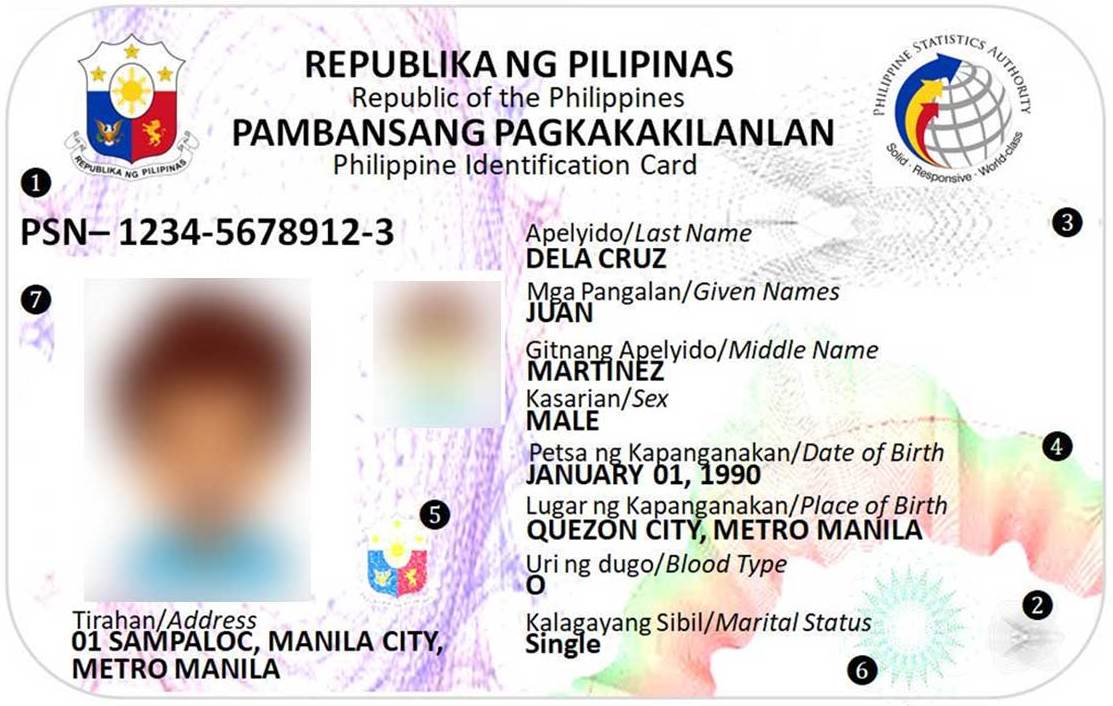News
PSA hits 9-M target registrants for 2020 under PhilSys

FILE: Sample of the front design of the PhilSyS/Philippine Identification Document (ID) card. (Photo By Philippine Statistics Office – Philippine Information Agency, Public Domain)
MANILA – The Philippine Statistics Authority (PSA) on Friday announced that it has surpassed its yearend goal to register the targeted nine million low-income Filipinos under the Philippine identification system (PhilSys).
As of Dec.14, the PSA said a total of 9,004,546 low-income individuals have taken the first step of the registration phase for the PhilSys.
Amid the pandemic, the PSA has done a house-to-house collection of demographic information of the targeted low-income household heads from 664 cities and municipalities of the 32 identified province including Ilocos Sur, La Union, Pangasinan, Cagayan, Isabela, Bataan, Bulacan, Nueva Ecija, Pampanga, Tarlac, Zambales, Batangas, Cavite, Laguna, Quezon, Rizal, Albay, Camarines Sur, Masbate, Antique, Capiz, Iloilo, Negros Occidental, Bohol, Cebu, Negros Oriental, Leyte, Compostela Valley, Davao Del Norte, Davao Del Sur, Davao Occidental, and Tawi-Tawi.
PSA Undersecretary Dennis Mapa said the current pace for Step 1 registration has allowed the PSA to increase its initial target of nine million Filipinos to 11 million for 2020.
“As we continue our Step 1 Registration operations in the first 32 provinces, we are confident that we will reach this next milestone before the year ends,” Mapa, also the National Statistician and Civil Registrar General, said in a statement.
Meanwhile, PSA Assistant Secretary Rosalinda Bautista said the PSA has marked 100.1 percent of its initial target of registering nine million Filipinos.
“This milestone is made possible with the strong support and full cooperation of the local government units [LGUs] of the 32 provinces, and dedication of PSA enumerators who went on the field to collect the registrants’ demographic information,” Bautista added.
PhilSys on track
Despite the health crisis and the recent onslaught of the typhoons that slowed down the PSA’s ground operations, Bautista said the PhilSys registration process is still on track.
While conducting the pre-registration, the PSA assured that both the registrant and registration staff are safe from the risks of coronavirus disease (Covid-19) infection by adhering to the health and safety protocols.
The second phase of the PhilSys registration is set to begin in January 2021, which will be done on a gradual and small-scale basis.
Step 2 involves the validation of supporting documents and capturing the registrants’ biometric information, such as fingerprints, iris scans, and front-facing photographs at the registration centers.
Step 3 of the registration is the issuance of a physical ID card stored with a 12-digit PhilSys number or personal serial number (PSN) and a 16-digit PhilSys card number (PCN).
Signed into law by President Rodrigo R. Duterte in August 2018, Republic Act 11055, or the Philippine Identification System Act, aims to establish a single national ID for all Filipinos and resident aliens.
The national ID shall be a valid proof of identity that shall be a means of simplifying public and private transactions, enrollment in schools, and the opening of bank accounts.
It will also boost efficiency, especially in dealing with government services where people will only need to present one ID during transactions.





















